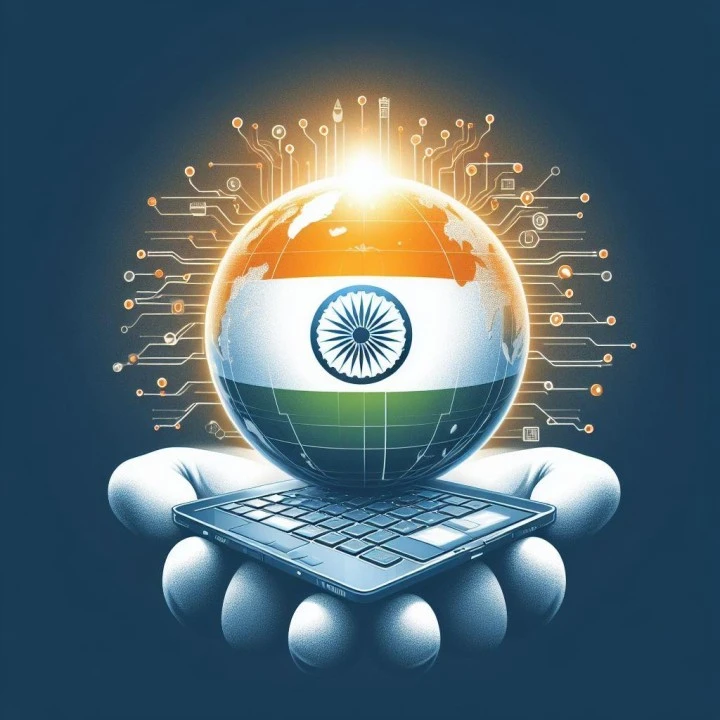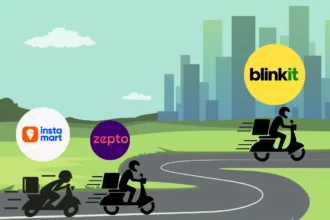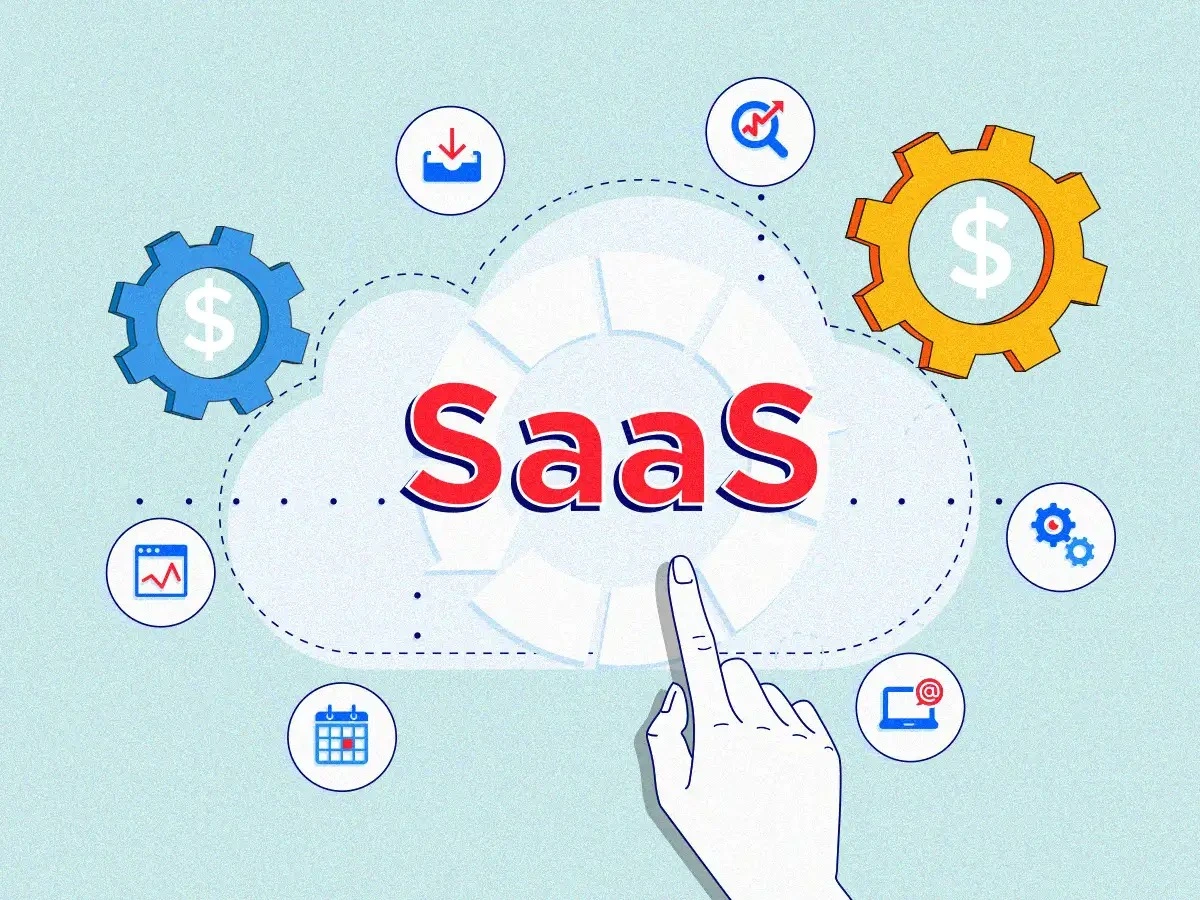Estimated Reading Time: 30-31 minutes (5,861 words)
Introduction
Over the past decade, India has quietly transformed from an outsourcing hub to a global product powerhouse — and nothing reflects this shift more clearly than the rise of Indian SaaS (Software-as-a-Service). What began with a handful of Chennai and Bengaluru startups experimenting with cloud-based tools has evolved into a $15B+ industry, home to dozens of companies crossing $100M ARR and serving customers in more than 100 countries. Along the way, Indian founders have rewritten the playbook by combining world-class engineering, cost-efficient product development, and an early focus on international markets.
Today, Indian SaaS is no longer a promising niche—it’s a globally competitive ecosystem influencing how enterprises operate, developers build, and teams collaborate. From developer tools used by Fortune 500 companies to vertical SaaS powering healthcare, logistics, and fintech, India’s products are respected for reliability, scalability, and thoughtful design. Backed by a maturing investor landscape, strong digital infrastructure, and AI-driven innovation, the sector is accelerating faster than ever.
This blog breaks down the trends, data, opportunities, and strategies behind India’s SaaS momentum — whether you’re a founder, investor, content creator, or simply curious about how India is reshaping the global cloud software market. Let’s dive in.

Why This Matters — A Quick but Powerful Snapshot
India’s SaaS (Software-as-a-Service) ecosystem isn’t just “growing”—it has officially entered the global big leagues. According to JM Financial Research, the Indian SaaS industry crossed $15.1 billion in annual recurring revenue (ARR) in FY24, marking a 25%+ YoY growth rate, even during a global tech funding slowdown.
Even more impressively, 36+ Indian SaaS companies have already crossed the $100M ARR milestone, compared to fewer than 10 such companies just five years ago. This shows two major shifts:
- India is no longer a backend outsourcing hub — it is now a product-first economy.
- Indian SaaS companies can build globally competitive, category-defining products.
These numbers indicate the rise of India as the world’s SaaS factory, with companies exporting high-value software to the US, Europe, Middle East, and APAC.
A Giant Wave Meets a Giant Market
On the global front, SaaS demand is exploding due to cloud migration, AI adoption, and enterprise automation. Multiple research bodies align on one conclusion: the market will be massive.
- Grand View Research estimates the global SaaS market will hit $908.21 billion by 2030, growing at a 13.7% CAGR.
- Statista’s extended forecast sees the market rising from $197B in 2023 to ~$819B by 2032.
- Gartner reports that cloud application spending alone will exceed $300B annually by 2025.
This means the global SaaS opportunity is expanding by hundreds of billions of dollars, giving Indian SaaS companies a large and fast-growing customer base to sell into.
What This Means for India
Here’s why this moment is crucial for India:
- India’s SaaS startups are scaling faster than startups in many global tech ecosystems.
- India’s SaaS revenue has the potential to reach $50–70 billion by 2030, according to McKinsey and Bain.
- With strong developer talent, lower costs, and global demand, India is becoming the Silicon Valley of SaaS.
- AI-led SaaS (AIGS: AI + SaaS models) will likely create new unicorns at a faster pace.
- Indian products are becoming mission-critical for global businesses — from SMB CRM tools to enterprise automation to cybersecurity.
Key Takeaway
The combination of a hyper-growth global market and India’s high-quality, cost-efficient product talent is setting the stage for a once-in-a-decade SaaS boom. This is why Indian SaaS startups are not just participating — they are winning on the global playing field.
Latest Market Trends & High-Impact Stats (With Citations)
India’s SaaS industry in 2024–2025 is experiencing one of the strongest growth phases in the world. Multiple independent reports—from JM Financial to Bain, McKinsey, and Inc42—show that India is emerging as the #2 global SaaS hub (after the US) in terms of product innovation, ARR scale, and global customer acquisition.
Below is a deeply expanded, data-backed breakdown:
1. India’s SaaS Revenue Growth Is Outpacing Global Benchmarks
JM Financial Research’s FY24 analysis of 250+ Indian SaaS companies (each with ≥$10M ARR) showed:
- Total SaaS industry revenue (FY24): $15–16 billion+
- 5-year CAGR (FY19–FY24): ~24%
- The cohort grew from $6B in FY19 → $15.1B in FY24, even during macroeconomic slowdowns.
This puts India among the fastest-growing SaaS ecosystems globally — ahead of some mature markets like Europe, Japan, and Israel.
Citation: JM Financial Research, “Indian SaaS Sector Report, 2024”.
2. VC/PE Funding Rebound — Huge Signal for SaaS Exits & Buyouts
After a slow 2023, India saw a sharp revival in venture activity:
- $13.7B in VC funding in 2024, mainly in SaaS, fintech, AI, and B2B tech.
- Total PE-VC investments reached ~$43B, showing strong late-stage participation.
- Buyout funds and global PE players (Vista, Thoma Bravo, Blackstone) continue increasing exposure to enterprise SaaS — signaling confidence in Indian startup fundamentals.
Why this matters:
SaaS is a predictable, high-margin, cash-generative model, making it attractive for buyouts, secondary transactions, and IPOs (India + US).
Citation: Bain & Company India PE-VC Report 2024.
3. Global SaaS Market Outlook — A $1 Trillion Opportunity by the 2030s
Global demand for cloud software remains extremely strong:
- Grand View Research: SaaS will reach $908.21B by 2030, growing at 13.7% CAGR.
- Statista: Market will expand from $197B (2023) to ~$819B by 2032.
- Other analysts forecast $1–1.2T total market size by early 2030s with AI-driven SaaS accelerating adoption.
Key driver: Enterprises are rapidly shifting from “purchase” to “subscription” models — boosting demand for Indian-built tools in:
- CRM
- HR & payroll
- Cybersecurity
- DevOps
- FinOps
- Vertical SaaS platforms
Citation: Grand View Research SaaS Market Outlook 2030; Statista Cloud Report 2024.
4. Rise of Vertical SaaS + AI-Native SaaS (India Leads in Both)
Two mega-trends dominate 2024–2025:
a) Vertical SaaS (VSaaS)
Startups are building industry-specific tools, which often achieve:
- Higher retention
- Stickier workflows
- 2–3× higher ARPU vs horizontal SaaS
Examples:
- Zetwerk SaaS for manufacturing
- Increff for retail inventory
- Mindtickle for sales enablement
- Capillary for loyalty management
b) AI-Native SaaS (AIGS)
Indian SaaS founders are aggressively embedding AI across:
- Sales workflows
- Support automation
- Security analytics
- Developer tools
- HR + compliance
- Marketing automation
According to Inc42’s India SaaS Report 2024:
- 70%+ of new SaaS products launched in India in 2023–2024 have AI/ML as core features
- AI-enabled SaaS improves retention by 15–30% and boosts per-seat pricing
Citation: Inc42 State of Indian SaaS Report 2024 (asset.inc42.com).
5. India Is Becoming a Global SaaS Export Powerhouse
Key export trends from the latest reports:
- Over 70% of Indian SaaS revenue comes from international markets (primarily US, EU, MENA, APAC).
- The US alone contributes >60% of enterprise revenue for Indian SaaS unicorns.
- India is producing a new wave of $10M–$50M ARR companies every year — a strong pipeline for the next set of unicorns.
By 2030, India’s SaaS exports may exceed:
- $50–70 billion (McKinsey) with high probability
- Potentially $100B+ under an AI-accelerated scenario
⚡ Quick Stat Box (Updated & Enhanced)
| Metric | 2024–2025 Value | Source |
| India’s SaaS Revenue (FY24) | $15B+ | JM Financial Research |
| Indian SaaS CAGR (FY19–FY24) | ~24% | JM Financial |
| Indian SaaS Companies with >$100M ARR | 36+ | JM Financial |
| VC Funding (India, 2024) | $13.7B | Bain India |
| Total PE-VC Investments (2024) | ~$43B | Bain |
| Global SaaS Market (2030) | $700–900B | Grand View Research |
| Global SaaS Forecast (2032) | $820B+ | Statista |
| AI/Vertical SaaS Adoption (India) | 70% of new SaaS products include AI/ML | Inc42 |
| SaaS Revenue from Exports | ~70%+ | McKinsey / SaaSBoomi |
10-Year Outlook (2025 → 2035): What the Next Decade of India SaaS Looks Like
India’s SaaS sector is entering a multi-decade expansion cycle similar to what Silicon Valley experienced during the early cloud boom. By combining insights from JM Financial Research, IBEF, McKinsey, Bain, Gartner, and global SaaS trendlines, we can build a realistic 10-year forecast (2025–2035) across conservative, moderate, and optimistic scenarios.
Below is a much more comprehensive synthesis:
A. Conservative Scenario (Steady Growth, Controlled Expansion)
Projected India SaaS market size by 2032–2035: $30–40 billion
(Baseline CAGR: 12–16%)
Assumptions:
- Growth stabilizes due to macro factors (funding cycles, enterprise spending slowdowns).
- India continues to build strong mid-market and vertical SaaS but global dominance remains gradual.
- Growth is driven mainly by $10M → $50M ARR companies maturing and converting domestic clients to global accounts.
- Hiring, GTM expansion, and AI adoption continue at healthy but controlled speed.
- India maintains its talent cost advantage but competition increases from LATAM and Eastern Europe.
Key signals supporting this scenario:
- JM Financial’s current SaaS cohort (250+ companies, ARR ≥ $10M) already shows ~24% 5-year CAGR, but is expected to normalize as markets mature.
- Enterprise cloud budgets globally grow moderately due to cost-optimization cycles.
- Indian founders focus on profitable growth, not hyper-scaled burn, leading to stable long-term expansion.
Outcome:
India remains a major global SaaS exporter, but scale accelerates at a measured pace, reaching ~$35B in early 2030s.
Source: JM Financial Research, 2024.
B. Moderate Scenario (Current Momentum Continues, AI Boost Plays Out)
Projected India SaaS market size by 2032–2035: $40–50+ billion
(CAGR: 16–20%)
Assumptions:
- AI-native SaaS dramatically improves product differentiation, retention, and pricing power.
- Indian startups scale faster in global markets through remote-first GTM hiring.
- India becomes the #2 global SaaS ecosystem (after the US) in terms of ARR, founders, and unicorns.
- VC and PE funding remain stable, enabling more companies to reach $100M+ ARR.
- Vertical SaaS sees mass adoption in manufacturing, logistics, BFSI, retail, and healthcare.
What drives this:
- AI-led automation boosts mid-market SaaS spend worldwide.
- India gains strong reputation in developer tools, cybersecurity, fintech SaaS, HR-tech, and sales/marketing automation.
- Global enterprises increasingly outsource entire software workflows to SaaS vendors rather than in-house builds.
Outcome:
India crosses $45B–50B SaaS revenue by 2033–2035, becoming a major creator of global B2B software products.
C. Optimistic Scenario (Hypergrowth + AI Flywheel + Export Boom)
Projected India SaaS market size by 2032–2035: $55–70+ billion
(CAGR: 20–24%+)
This is the scenario highlighted in aggressive projections by IBEF and echoed by SaaSBoomi/McKinsey.
Assumptions:
- India sustains 20%+ CAGR for a decade—similar to Silicon Valley SaaS growth patterns.
- Indian SaaS products ride the global AI adoption super-cycle, creating entirely new categories across cybersecurity, devtools, martech, and enterprise automation.
- India becomes the world’s leading AI engineering hub, supplying both talent and AI-native SaaS products.
- Export revenue grows from today’s ~70% → 80–90% of total ARR.
- Several Indian SaaS companies hit $1B ARR, with dozens exceeding $100M ARR.
Supporting macro-trends:
- Global software spend approaches $1 trillion.
- More US/EU companies adopt “buy over build” for AI features.
- India’s infrastructure (cloud, digital public goods, UPI-style integrations) creates innovation advantages for SaaS workflows.
- India attracts more global enterprise clients due to AI cost-efficiency and faster deployment cycles.
Outcome:
India emerges as the SaaS capital of the world, with a potential market size exceeding $60B–70B by the early 2030s.
Source: India Brand Equity Foundation (IBEF); McKinsey India SaaS Outlook.
D. Structural Industry Shifts Expected Between 2025–2035
1. More SaaS IPOs
- India and US exchanges will see an influx of profitable, high-ARR SaaS IPOs.
- Sectors likely to dominate IPO activity: cybersecurity, HR-tech, retail SaaS, vertical SaaS, API platforms.
2. Cross-Border Acquisitions Increase
- US and European SaaS companies will expand through India-based acquisitions (talent + product).
- Indian startups will also acquire global niche SaaS products to expand GTM and capture markets.
3. Usage-Based Pricing Becomes Industry Standard
Shift from per-seat pricing → performance-linked or usage-linked:
- API calls
- Data processed
- Transactions
- Outcomes (e.g., revenue gained, leads generated)
This aligns revenue growth directly with customer ROI, boosting long-term retention.
4. AI-First Product Development Dominates
Every SaaS product will embed:
- predictive analytics
- generative workflows
- autonomous agents
- conversational interfaces
- automated debugging
- compliance automation
This reduces churn and increases ARPU.
5. India’s SaaS Talent Ecosystem Becomes a Global Magnet
- Salaries remain competitive vs Silicon Valley.
- India becomes the primary hiring destination for AI engineers, GTM specialists, and SaaS product designers.
E. Key Takeaway (One-Liner)
By 2035, India is poised to become one of the largest SaaS economies in the world, with revenue potentially reaching $30B (conservative) to $70B+ (optimistic)—driven by AI innovation, global exports, and a maturing SaaS founder ecosystem.
Key Drivers — Why Indian SaaS Scales Globally
India’s SaaS ecosystem has reached a point where global scale is no longer an exception — it’s the default. Thousands of founders are building products for the world from day one, supported by cost advantages, engineering excellence, and a mature SaaS playbook. Below is an expanded breakdown of the core drivers that enable Indian SaaS companies to succeed on the global stage.
1. Deep Engineering Talent + Strong Cost Advantage
India offers one of the world’s largest technical talent pools, with 2M+ STEM graduates annually and a rapidly growing population of AI/ML engineers.
Why this matters globally:
- Indian SaaS companies achieve 70–80% lower engineering cost per FTE vs the US/EU.
- This enables longer runway, faster iteration cycles, and the ability to build enterprise-grade products at a fraction of Silicon Valley budgets.
- Companies can ship new features weekly or even daily, increasing competitiveness against US/EU incumbents.
Supporting signals:
- SaaSBoomi reports that Indian startups achieve 2–3X higher engineering output per dollar spent.
- Global companies increasingly outsource product engineering + AI ops to India, reinforcing the talent flywheel.
2. Product-First Founders & PLG DNA (Product-Led Growth)
Modern Indian SaaS founders—especially second- and third-time entrepreneurs—operate with a Silicon Valley-style product mindset.
How this accelerates global scale:
- PLG reduces customer acquisition cost (CAC) by letting users experience value before buying.
- Companies rely on self-serve onboarding, freemium tiers, and viral workflows.
- Faster activation → higher conversions → better retention → shorter sales cycles.
Examples of successful Indian PLG SaaS models:
- Freshworks (SMB CRM, self-serve global GTM)
- Zoho (suite-based PLG model, 80M+ users)
- BrowserStack (developer tooling with instant onboarding)
- Postman (API development, community-driven adoption)
PLG has become a force multiplier for Indian SaaS going global.
3. Early Export Orientation — “Born Global” SaaS
A defining trait of Indian SaaS companies: they sell globally from day one.
Key revenue patterns:
- 70%+ of Indian SaaS revenue currently comes from overseas markets.
- North America accounts for 50–60% of total ARR for top companies.
- EMEA, APAC, and MENA are rapidly growing as cost-sensitive enterprises adopt cloud tools.
Why India sells globally early:
- Domestic SaaS spending has historically been small (though growing).
- Founders naturally target high-ARPU markets like the US.
- Remote-first GTM teams make global expansion easier and cheaper.
This early export strategy dramatically increases scalability and valuation potential.

4. Strong Investor Ecosystem, Late-Stage Capital & Growing Exits
India’s SaaS funding ecosystem is now well-developed and global.
Current investment climate:
- $13.7B in VC funding in 2024, up from previous years (Bain India).
- PE-VC investments crossed $43B, showing huge late-stage capital interest.
- More global funds (Accel, Sequoia, Tiger, Lightspeed, Peak XV, Insight Partners) are actively backing Indian SaaS.
Exit tailwinds:
- Secondary transactions are rising as founders take liquidity.
- PE firms increasingly look at profitable SaaS buyouts.
- Freshworks’ NASDAQ listing paved the way for future Indian SaaS IPOs.
- Several companies are preparing for US/India listings (~2025–2027 window).
This strong capital environment fuels product development, global hiring, and GTM expansion.
5. AI Adoption & Vertical SaaS (VSaaS) as High-Margin Growth Engines
Two major forces shaping the next decade of Indian SaaS:
A. AI-Native SaaS
Indian companies are embedding AI across the product stack:
- Autonomous agents
- Predictive analytics
- AI-generated insights
- Natural language workflows
- Automated customer support
- Intelligent security monitoring
AI improves:
- User productivity
- Scalability
- Product differentiation
- Pricing power (higher ARPU)
According to Inc42’s 2024 SaaS Report:
70%+ of all new SaaS products in India now include AI/ML as core features.
B. Vertical SaaS (Industry-Specific SaaS)
VSaaS is growing faster than horizontal SaaS due to:
- Higher switching costs
- Deep workflow integration
- Better ROI clarity
- Higher retention and lifetime value (LTV)
Indian VSaaS winners include:
- Zetwerk SaaS — manufacturing
- Capillary — loyalty & retail
- Increff — inventory optimization
- Mindtickle — sales enablement
- Fleetx — logistics visibility
Verticalization makes Indian SaaS stickier, enabling companies to win in niche but globally large industries.Citation: Inc42 India SaaS Report 2024 (asset.inc42.com)
6. Mature Founder Playbooks + Community Knowledge Sharing
India’s SaaS flywheel is powered by:
- SaaSBoomi
- Peak XV Surge
- Y Combinator India cohort
- Microsoft for Startups
- GTM playbooks designed specifically for selling to global markets
Founders today have access to mentors who have built $100M+ ARR companies, enabling repeatable, fast-scaling models.
⚡ Key Takeaway
India’s global SaaS scale is driven by a potent mix of cost efficiency, deep engineering talent, product-led growth, AI adoption, vertical specialization, strong investor support, and early export orientation. These factors create a powerful competitive moat that positions India as one of the world’s most influential SaaS export hubs.
Top Indian SaaS Companies — Mini Case Studies (What to Learn)
Short, high-leverage insights. Each one can expand into a full case study.
Freshworks — Customer Engagement SaaS (Chennai → Global Public Company)
Freshworks pioneered the “Chennai to Silicon Valley” blueprint by starting with a simple, SMB-friendly customer support suite and gradually expanding into omnichannel engagement, CRM, and ITSM. Their early advantage was a clean UI, aggressive value-based pricing, and a self-serve onboarding loop tailored for small teams. As ARR scaled, Freshworks moved up-market through enterprise-grade packaging, a unified platform strategy, and hiring senior GTM leaders in the US and Europe. Today, it operates globally with revenue guidance around the ~$800M range (varies by filings).
Key Lesson: Start with a clearly defined TAM (SMB), perfect your product motion, then layer enterprise features and sales muscle once you achieve scale and brand trust. Their hybrid model (self-serve + inside sales + field sales) is now a reference playbook for India SaaS.
Postman — API Lifecycle & Developer Tools (PLG at Scale)
Postman is one of the strongest examples of product-led growth from India. What began as a simple API testing client evolved into a full API lifecycle platform through relentless iteration and community building. Their freemium model drove massive bottom-up adoption globally, with usage spreading organically inside teams before procurement was ever involved. Postman later built enterprise plans around governance, security, collaboration, and advanced workflows—turning grassroots adoption into high-value contracts.
Key Lesson: Developer-first PLG can bypass traditional marketing and sales bottlenecks entirely. Win the hearts of developers first → monetize later through enterprise-grade compliance and scale features.
BrowserStack — Global-First Developer Testing Platform
BrowserStack solved a universal developer pain point: ensuring applications work across thousands of browsers and devices. They built a hyper-reliable infrastructure platform offering fast, accurate, cloud-based testing environments—something few companies had the engineering depth to replicate. By investing heavily in infra reliability, low latency, and enterprise SLAs, BrowserStack built a deep moat. Its revenue model centers on tiered seat-based pricing, expansion via additional products (App Live, App Automate), and enterprise adoption across QA-heavy industries.
Key Lesson: Solve a global pain point with undeniable ROI. Reliability and infra excellence are the product moat.
Chargebee — Billing & Subscription Orchestration (Deep Vertical SaaS)
Chargebee entered one of the most complex SaaS verticals—billing, revenue recognition, invoicing, and subscription management. Instead of building everything in-house, they focused on integrations: Stripe, Razorpay, Xero, QuickBooks, HubSpot, Salesforce. This made the product exceptionally sticky during customer scale. They used a dual strategy: SMB-first adoption and enterprise expansions via compliance, auditability, dunning, and multi-entity support. The company scaled ARR rapidly by targeting SaaS businesses, e-commerce brands, and digital subscription companies globally.
Key Lesson: In messy verticals like billing, integrations + compliance + reliability become your growth engine.
Cross-Company Lessons (What Founders Should Take Away)
- Know your buyer deeply: Every winning SaaS brand above started with a narrow persona—developers, support teams, finance teams, QA engineers—then expanded.
- Integrations drive adoption: Each scaled company built tight integrations with upstream/downstream workflows.
- Reliability compounds: Infra-heavy products (BrowserStack, Chargebee) turned performance into their strongest moat.
- Value expansion beats customer acquisition: Seat expansion, add-ons, governance modules, and advanced workflows became major ARR drivers.
Growth Benchmarks & Sample Metrics Table (Detailed Breakdown)
Below is a richer set of benchmarks commonly used across SaaS (from early-stage to mid-scale). Ranges vary by sector (DevTools vs. Vertical SaaS vs. PLG vs. Enterprise), but these directional metrics help founders diagnose performance.
📊 SaaS Benchmark Metrics — Detailed Table
| Metric | Healthy Range (SaaS startups) | What It Indicates / Notes |
| ARR Growth (YoY) | Early-stage: 40–100%+Growth/Scale: 20–40% | Top-line traction. Growth naturally slows as ARR base increases; early PLG companies often show faster growth due to viral loops. Enterprise-heavy models scale slower but have higher ACVs. |
| Gross Margin | 70–85% (product-led)60–75% (infra-heavy platforms) | Margin depends on hosting, infra intensity, and support. DevTools and PLG tools typically have higher margins; infra-intensive SaaS (testing clouds, security, AI inference) run lower margins. |
| Net Revenue Retention (NRR) | 100–120%+ for SMB/PLG120–140%+ for enterprise SaaS | Strongest indicator of product-market fit and expansion. Enterprise SaaS often sees “land → expand” motion with seat growth, additional modules, and usage-based expansion. |
| Gross Revenue Retention (GRR) | 85–95% | Measures pure customer retention without expansions. Anything <80% signals churn issues or poor onboarding. |
| CAC Payback Period | PLG/SMB: 6–12 monthsEnterprise: 12–24 months | Measures how quickly you recover acquisition cost. PLG companies usually achieve shorter payback; sales-led enterprise motions require longer cycles but yield higher LTV. |
| LTV:CAC Ratio | 3:1 or higher | Classic SaaS benchmark: value generated vs. cost of acquiring customers. Ratios above 5:1 may signal under-investment in growth. |
| Magic Number | >0.7 (acceptable)>1.0 (strong) | Measures sales efficiency via the increase in revenue vs. sales/marketing spend. <0.5 indicates inefficient GTM. |
| Burn Multiple | 1–1.5 (healthy)2+ (concerning) | Burn multiple = Net Burn / Net New ARR. Efficient companies add ARR cheaply; poor multiples indicate expensive growth or high churn. |
| Rule of 40 | ≥40 (Growth % + Profit Margin %) | Balances growth with profitability. High-growth companies can run losses; mature SaaS should aim for profitability plus steady growth. |
| Churn Rate (Logo) | SMB: <3–5% monthlyEnterprise: <1–2% monthly | SMB churn tends to be higher due to smaller teams and lower switching costs. Enterprise churn is expected to be very low. |
| ARPU / ACV Growth | 10–30% YoY | Driven by expansions, upsells, usage-based pricing, and adding new modules/features. |
| Activation Rate (PLG) | 20–40%+ | % of signups who complete “aha-moment” actions. Critical for bottoms-up products. |
| Free → Paid Conversion (PLG) | 2–7% (SMB)8–12% (prosumer) | Highly variable; depends on onboarding, pricing, and friction. Dev tools usually have lower conversion but viral usage. |
How to Use These Benchmarks (Founder Notes)
- Benchmarks vary by motion: PLG → faster growth & lower CAC; Enterprise → higher ACV & stronger NRR.
- NRR > 120% is the gold standard—it allows SaaS companies to scale without inefficient spend.
- Burn Multiple is now a top investor metric in the efficiency era (2023–2026), replacing “growth at all costs.”
- CAC Payback is one of the best GTM health indicators: Long payback usually signals GTM or positioning issues.
- Rule of 40 is a board-level metric for mid-to-late-stage companies to balance profitability vs. growth.
Important Disclaimer
These benchmarks are directional, not prescriptive.
Each startup must calibrate metrics using its own cohorts, go-to-market motion, and customer segments.
Challenges & How to Prevent Common Scaling Mistakes
Scaling a SaaS company—especially one selling globally from India—comes with a distinct set of execution risks. Many startups hit a “growth wall” not because the market is weak, but because they scale processes, people, or GTM motions before the product and operations are ready. Below are the most common mistakes and detailed ways to prevent them.
1) ❌ Mistake: Prematurely Hiring Global Sales Teams (Before PMF)
What happens:
Startups rush into hiring expensive SDRs, AEs, and regional leaders in the U.S./EMEA without having strong activation, retention, or clear ICP alignment. This leads to:
- High burn
- Low win rates
- Confused sales cycles
- Mismatch between product capabilities and customer expectations
Why it’s a problem:
Sales teams cannot fix unclear value propositions or weak onboarding. Sales-led GTM magnifies product gaps.
How to fix it (the right sequence):
- Validate PMF first:
- NRR ≥ 100%
- Activation rate is stable
- At least 5–10 paying customers in the same ICP profile
- Clear “Aha!” moments identified
- NRR ≥ 100%
- Use founder-led sales till early repeatability:
Founders learn objections, pricing signals, and integration pain points. - Scale GTM only after repeatable patterns emerge:
Once you see consistent deal cycles and a predictable conversion funnel, build SDR → AE → CSM gradually. - Adopt a “1–3–10” hiring pattern:
Hire 1 AE → refine → scale to 3 → refine → scale to 10 when metrics stabilize.
2) ❌ Mistake: Ignoring Compliance, Data Security & Global Regulations
What happens:
Founders focus on features and skip early compliance planning, resulting in:
- Lost enterprise deals
- Blocked EU expansion (GDPR issues)
- Architecture redesign costs later
- Poor trust scores in InfoSec reviews
Why it’s important:
Modern SaaS buyers (especially mid-market + enterprise) require compliance as table stakes. The cost of retrofitting security is far higher than designing it early.
How to fix it (design security early):
- Bake compliance into initial architecture:
- SSO (SAML/OAuth) readiness
- Audit logs
- Encryption-at-rest + in-transit
- Multi-tenancy or single-tenant isolation
- RBAC & access governance
- SSO (SAML/OAuth) readiness
- Prepare for regional data laws:
- GDPR (EU)
- SOC 2 Type II (US)
- ISO 27001
- DPDP Act (India)
- GDPR (EU)
- Implement data residency options:
Especially for EU and regulated industries (FinTech, HealthTech). - Build a lean InfoSec function early:
Even a small team or outsourced vendor to handle questionnaires and compliance documentation saves months later.
3) ❌ Mistake: Neglecting Churn & Focusing Only on Topline Growth
What happens:
Many SaaS companies celebrate new ARR but ignore churn (especially SMB churn). Over time:
- NRR drops below 100%
- Acquisition spend rises
- LTV falls
- Upsell paths weaken
- Expansion revenue becomes inconsistent
Why it matters:
High churn kills SaaS momentum faster than slow growth.
The strongest SaaS companies scale because expansion revenue covers churn automatically.
How to fix it (build a retention engine):
- Strengthen onboarding:
- Simplify setup flows
- Add templates and guided workflows
- Use in-product checklists and nudges
- Simplify setup flows
- Instrument product analytics early:
Tools like Amplitude, Mixpanel, and PostHog help spot drop-offs and feature adoption failures. - Set up in-product help systems:
- Tooltips
- Interactive walkthroughs
- Help center integration
- Tooltips
- CSM for high-value & expansion accounts:
Even PLG-heavy companies run CSM teams for enterprise expansion. - Churn analysis:
Categorize churn:
- Product-level (missing features)
- Value-level (pricing mismatch)
- Product-level (missing features)
External (budget cuts, economic shifts)
Fix the top 2–3 root causes and re-run cohorts quarterly.
FAQs Section
1. How big is India’s SaaS market in 2024?
India’s SaaS ecosystem surpassed a major milestone in FY24.
A bottom-up analysis by JM Financial (covering ~250 companies with ARR ≥ $10 million) estimated that Indian SaaS companies generated over $15 billion in annual revenue. The sector’s 5-year CAGR (FY19–FY24) is ~24%, driven by strong export motion, PLG adoption, and enterprise deal expansion.
India is now the second-largest SaaS ecosystem globally, trailing only the U.S. and ahead of major European hubs.
(Source: jmflresearch.com)
2. Which Indian SaaS firms have crossed $100M ARR?
As of FY24, 36+ Indian SaaS companies have crossed the $100M ARR threshold according to JM Financial’s SaaS Cohort Report. This list includes well-known global players such as:
- Freshworks – CX, CRM, ITSM suites
- Postman – API lifecycle management
- BrowserStack – Developer testing infra
- Chargebee – Subscription billing & revenue management
- Zoho (multiple products) – Productivity & enterprise suites
- Icertis – Contract lifecycle management (CLM)
- Druva – Cloud data backup & security
HighRadius – AI-powered FinOps & receivables
Many others are approaching $100M through vertical SaaS or infra-led growth.
(Source: jmflresearch.com)
3. Is India’s SaaS industry primarily export-oriented?
Yes. The majority of Indian SaaS revenue comes from global markets, especially:
- North America (largest share)
- Europe (EMEA)
- APAC (fastest-growing secondary market)
This export dominance is driven by:
- Strong product-led motions preferred by global SMBs and mid-market customers
- India’s engineering + cost structure enabling high-margin global selling
The universal nature of developer tools, infra APIs, and niche enterprise workflows
In many SaaS sub-sectors (developer tools, security, infra), export share is 70–90%.
4. What are the fastest-growing verticals within India’s SaaS sector?
Vertical SaaS is expanding rapidly, with 2024–2025 hotspots including:
- Fintech Infrastructure SaaS (compliance, lending, underwriting, KYC)
- Healthtech SaaS (telemedicine infra, EHR, diagnostics systems)
- HR, Payroll & Workforce Management SaaS
- Logistics & Supply Chain SaaS
- Retail & Omnichannel Commerce SaaS
Manufacturing & Industrial SaaS
Vertical SaaS exhibits higher switching costs, stickier NRR, and better pricing leverage.
(Source: asset.inc42.com)
5. How much funding is available to Indian SaaS startups today?
Funding momentum rebounded strongly in 2024.
According to Bain’s India PE-VC Report:
- VC funding (all sectors): $13.7 billion
- Total PE-VC investments: ~$43 billion
SaaS continues to attract a disproportionate share of late-stage funding, especially in: - AI-driven SaaS
- Vertical SaaS
- Developer/infra platforms
Security & DevSecOps
The funding landscape is healthier than 2023, although investors are more selective about metrics and profitability.
(Source: Bain India PE-VC Report)
6. What unit economics should SaaS founders target?
Healthy, scalable SaaS economics typically aim for:
- LTV:CAC ≥ 3:1 → Shows positive long-term margin health
- CAC payback ≤ 18 months (6–12 months is strong for PLG)
- NRR ≥ 100% → 110–130% for enterprise or AI-enhanced products
- Gross margin: 70–85% for pure SaaS
- Churn:
- SMB: ≤ 3% monthly
- SMB: ≤ 3% monthly
Enterprise: ≤ 8–10% annual
Founders should track cohorts (ARR/MRR cohorts) every quarter to validate ROI.
7. Are Indian SaaS valuations attractive in 2024–2025?
Valuations saw a correction post-2021 but stabilized in 2024.
Current trends indicate:
- High-quality businesses (strong retention, AI-linked value, export-heavy) are seeing valuation re-rating.
- Investors emphasize:
- Efficiency → Rule of 40
- Customer quality → low churn
- AI defensibility → workflow integration, automation
- Multiple compression has slowed; strong companies still command premium:
- Developer tools: high multiples
- AI infra: very high multiples
Horizontal SaaS: moderate but stable
(Source: Bain)
8. Should founders adopt usage-based pricing?
Usage-based pricing (UBP) has become mainstream across:
- API-first companies
- Developer tools
- Fintech infra
- Cybersecurity
- Data/analytics platforms
UBP works best when:
- The ROI increases with usage
- Usage patterns are predictable
- The product directly powers customer revenue or productivity
Many Indian SaaS companies succeed with hybrid pricing:
- Base subscription (per seat/module)
- Elastic usage pricing (API calls, events, data volume)
This allows predictable ARR + upside expansion as customers scale.
9. What role does AI play in today’s SaaS product strategy?
AI is now central—not optional—for modern SaaS differentiation.
AI drives:
- Automated workflows
- Self-solving support and in-product assistants
- Intelligent recommendations
- Better onboarding and lower activation friction
- Predictive analytics
- Automated documentation, QA testing, and code generation
- AI copilots (premium upsell)
AI features typically improve:
- Activation rates
- NRR (expansion revenue)
- Enterprise willingness-to-pay
Vertical SaaS players are embedding domain-specific AI, where margins and defensibility are highest.
(Source: asset.inc42.com)
10. How do Indian SaaS startups build global GTM teams?
The common global expansion playbook includes:
- Founder-led US/EMEA sales for first 20–50 deals
- Hire a local SDR to manage outreach
- Add 1–2 AEs in priority regions (East/West Coast US or Western Europe)
- Build a remote CSM team in India to reduce cost
- Use channel partners for APAC and regulated industries
- Add solution engineers to support enterprise onboarding
- Scale only after refining ICP, pricing, and win-loss insights
Companies like Freshworks and BrowserStack used this hybrid model effectively.
11. How can content creators monetize SaaS coverage?
Content creators can build multiple revenue streams:
- Affiliate marketing with SaaS tools
- Sponsored content from SaaS companies, VCs, accelerators
- Premium downloadable reports (ARR benchmarks, playbooks)
- Lead generation for SaaS vendors
- Newsletter sponsorships targeted at founders & developers
- YouTube explainers (SaaS breakdowns, case studies)
Comparison tables with affiliate links
SaaS is one of the highest-paying affiliate niches, making it ideal for monetization.
12. What compliance or regulatory hurdles must Indian SaaS companies prepare for?
Key regulatory expectations include:
Global Compliance:
- GDPR (EU) — data deletion, consent, privacy workflows
- CCPA (California) — consumer rights + data sale restrictions
- SOC 2 Type II — must-have for enterprise selling
- ISO 27001 — security frameworks
Vertical Compliance:
- HIPAA (Healthcare)
- PCI DSS (Payments)
- SOX (Finance + audit trails)
India-specific law:
- DPDP Act 2023 → data privacy, data fiduciary obligations
Technical prep required:
- Role-based access
- Encryption at rest & transit
- Data residency options
- Detailed audit logs
- DPO/Infosec readiness for 200+ security questionnaires
13. What are the top challenges Indian SaaS founders face when selling globally?
Key challenges include:
- Long US-based sales cycles
- Lack of early enterprise credibility
- Feature gaps vs global incumbents
- Limited understanding of Western buyer psychology
- Compliance readiness (SOC 2/GDPR)
- Hiring the first 1–2 AEs in the US
- Currency exposure & pricing localization
These can be solved with stronger ICP focus, better onboarding, and phased GTM expansion.
Summary / Key Takeaways
- India’s SaaS ecosystem is global-grade
- The Indian SaaS sector generated $15 B+ in ARR in FY24, with 36+ companies crossing $100M ARR, showcasing strong scale and sophistication. (JM Financial)
- This demonstrates that Indian SaaS has transcended its “outsourcing-engine” roots and now builds globally competitive products.
- The Indian SaaS sector generated $15 B+ in ARR in FY24, with 36+ companies crossing $100M ARR, showcasing strong scale and sophistication. (JM Financial)
- AI, verticalization, and PLG are supercharging growth
- Embedding AI/ML into workflows is enabling Indian SaaS startups to build more intelligent, sticky, and monetizable products. (Inc42)
- Vertical SaaS — specialized tools for industries like fintech, health, logistics, and HR — are producing higher ARPU and lower churn.
- Product-Led Growth (PLG) allows bottom-up adoption, lowering CAC and enabling viral expansion.
- Embedding AI/ML into workflows is enabling Indian SaaS startups to build more intelligent, sticky, and monetizable products. (Inc42)
- Funding is healthy and exit potential is strong
- With $13.7B in VC funding in 2024 and ~$43B in total PE-VC investments, capital remains available for scaling SaaS globally. (Bain)
- The IPO pipeline and M&A activity are maturing, suggesting more global exits for Indian SaaS companies in the coming years.
- With $13.7B in VC funding in 2024 and ~$43B in total PE-VC investments, capital remains available for scaling SaaS globally. (Bain)
- Engineering depth + cost arbitrage remain core moats
- India’s large engineering talent pool and cost-efficient development enable SaaS startups to build infrastructure-heavy, high-quality products at a lower burn rate.
- This competitive advantage helps Indian SaaS firms invest more in R&D and global go-to-market from Day 1.
- India’s large engineering talent pool and cost-efficient development enable SaaS startups to build infrastructure-heavy, high-quality products at a lower burn rate.
- Compliance and data strategy are non-negotiable for global success
- To win enterprise and international customers, Indian SaaS startups must build compliance (GDPR, SOC 2, data residency) into their architecture early.
- Security maturity (encryption, RBAC, audit logs) serves as both a risk mitigator and a trust signal to large customers.
- To win enterprise and international customers, Indian SaaS startups must build compliance (GDPR, SOC 2, data residency) into their architecture early.
- Retention & expansion metrics are critical for sustainable scale
- Net Revenue Retention (NRR) above 100% is vital — it signals that customers are expanding and that your product has “land-and-expand” potential.
- Churn, CAC payback, and LTV:CAC ratios should all be tracked rigorously via cohort analysis — not just headline ARR growth.
- Net Revenue Retention (NRR) above 100% is vital — it signals that customers are expanding and that your product has “land-and-expand” potential.
- For content creators, SaaS is a goldmine
- High-paying affiliate opportunities exist across SaaS tools (cloud, billing, analytics, dev tools).
- Sponsored content by SaaS vendors and VCs, premium reports, executive interviews, and deep-dive playbooks offer multiple monetization levers.
- The SEO potential is huge: evergreen research, case studies, and tool comparisons can drive consistent organic traffic + link-building.
- High-paying affiliate opportunities exist across SaaS tools (cloud, billing, analytics, dev tools).
- India is likely to emerge as a global SaaS export powerhouse by 2030
- Given current growth trajectories, strong engineering advantages, rising AI adoption, and global GTM momentum, India has the potential to become one of the top SaaS-producing economies in the world.
- This positions not just individual companies, but the entire ecosystem for a generational opportunity — both for product founders and content creators.
- Given current growth trajectories, strong engineering advantages, rising AI adoption, and global GTM momentum, India has the potential to become one of the top SaaS-producing economies in the world.

Conclusion
India’s SaaS sector has unmistakably stepped onto the global stage, driven by a powerful blend of engineering depth, cost-efficient product development, and founders who think beyond domestic markets from day one. The ecosystem has matured rapidly — from scattered early players to a structured community of high-ARR companies, repeat founders, and specialized talent pools in product, engineering, and GTM. With over $15B in revenue and 36+ $100M ARR firms in FY24 (JM Financial), the foundation is no longer theoretical; India now produces globally competitive SaaS companies across developer tools, vertical SaaS, productivity, fintech infra, and AI-led automation.
At the same time, the supporting environment has strengthened: venture funding is rebounding, private equity interest is deepening, and global enterprises are increasingly comfortable adopting Indian-built software. The shift toward PLG, usage-based pricing, and AI-driven workflows has further accelerated India’s competitiveness, allowing companies to scale internationally with leaner teams and more efficient economics. As compliance maturity and enterprise reliability improve, Indian SaaS companies are not just participating in global markets — they are shaping them.
For founders, operators, and content creators alike, this moment represents a rare convergence of opportunity and market readiness. Building in SaaS today means aligning with strong macro tailwinds, a large global TAM, and an ecosystem hungry for high-quality knowledge, benchmarks, and tooling. Whether your goal is scaling ARR, mastering GTM, or monetizing domain expertise through content, the next decade rewards those who build deliberately — grounded in unit economics, customer-centric product design, and credible thought leadership. India’s SaaS story is no longer emerging; it is evolving into a global force, and the window to participate is wide open.
References & Sources
- JM Financial — India’s SaaS: Taking Wings (bottom-up report; India SaaS > $15B in FY24). jmflresearch.com
- The Economic Times — India’s SaaS sector tops $15 billion in revenue as IPO pipeline builds. The Economic Times
- Bain & Company — India Venture Capital Report 2025 (VC rebound to $13.7B in 2024). Bain
- Grand View Research — SaaS market size & forecast to 2030. Grand View Research
- IBEF — The rise of SaaS in India: trends and future outlook (growth projections to 2032). India Brand Equity Foundation
(Use the links above as primary citations for any fact-checking or quotes you place in social posts or downstream content.)







